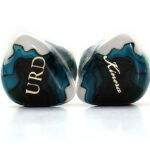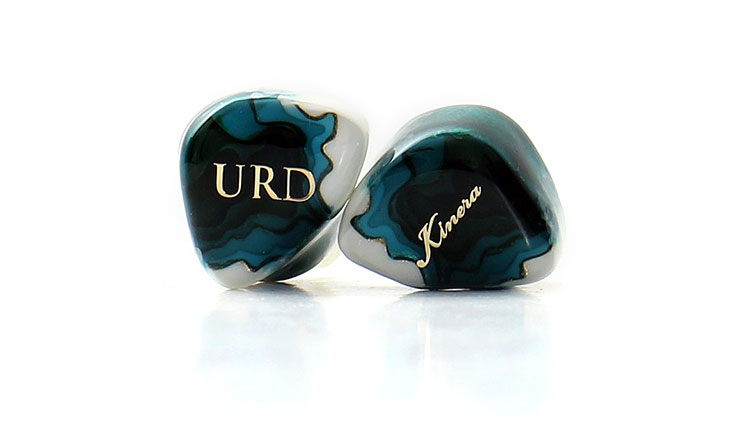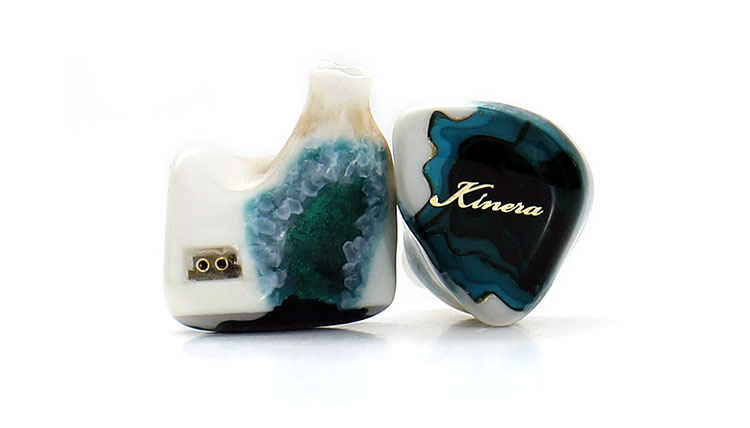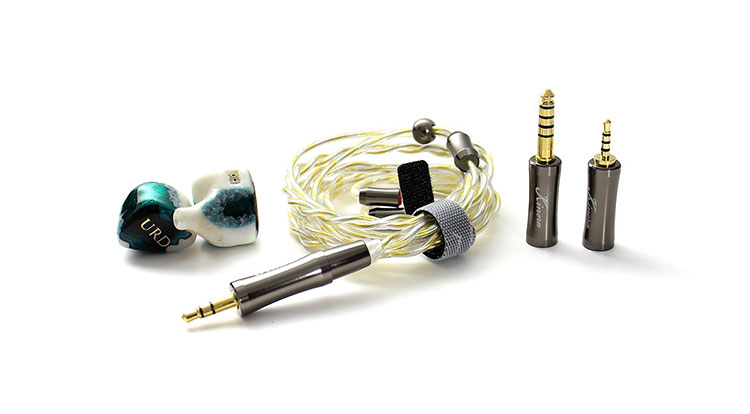In today’s review, we look at the new Kinera Imperial URD which is a new multi-driver electrostatic hybrid universal IEM. It is priced at $650.
Disclaimer: This was sent to us as a sample for our honest opinion. Headfonics is an independent website with no affiliate links or services. We thank the team at Kinera and HifiGo for giving us this opportunity.
To read more on Kinera products we have featured on Headfonics click here.
Note, this article follows our latest scoring guidelines which you can read up on here.
Blend art with sound, and add a little Norse mythology into the mix and that would be a good general description of characteristics that fits Kinera well, or at least that’s how I have come to know this IEM maker. Kinera assembles each IEM shell and finishes them off with an artistic flair by applying all the artwork on their shells by hand.
But artwork aside, I like their IEMs mostly for their smooth and balanced sound character, soft-mannered temperament with lots of detail, and fairly neutral frequency response with good dynamic range. Kinera rarely makes aggressively tuned IEMs and mainly sticks to what I call a safe tuning.
Their latest IEM release, the Imperial URD, is another Kinera venture that incorporates the safe tuning concept. The highlight of this model is the use of Sonion electrostatic tweeters.
Kinera has used Sonion tweeters on their other IEMs like the Nanna, the Baldr, and the Odin just to name some. Each one of these models is in a high tier so you could say the URD has high expectations to live up to.
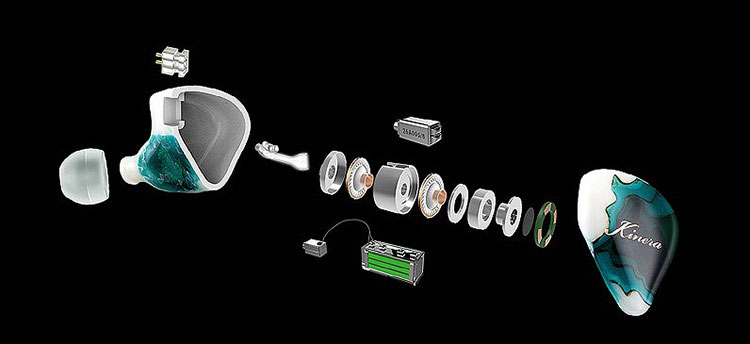
Tech Highlights
I was somewhat confronted with a discrepancy regarding the driver configuration because on the Kinera URD webpage there are four drivers mentioned but I will mention the three discussed elsewhere. On the top of their URD website page, I’m pretty certain it’s the correct configuration since that’s what you can clearly see in the exploded view.
We can see there are Sonion EST65DB01 composite electrostatic tweeters that handle the top end within the exploded view. Kinera makes a handful of IEMs that use Sonion tweeters and you could add the Imperial URD to that list now but it is presently the least expensive of the bunch.
There is mention of an RAF-32873 driver but again, I’m pretty sure the Imperial URD uses their custom 11021 balanced armature driver for the center frequencies. I think the association perhaps is that the 11021 is based on the RAF-32873. The 11021 is a full frequency range composite balanced armature driver just the same which is customized in-house by Kinera.
There’s also mention of a coaxial 8mm Titanium Crystal dual-diaphragm dynamic driver which sounded exciting to me. The thought that there was a dual dynamic, dual subwoofer driver setup in there when in fact the single housing driver looks configured similar to an Isobaric internally in where both driver cones share the same housing with one cone mounted behind the other.
Design
Kinera has a first time ever claim here with the URD and in particular with their 3D faceplate design which was achieved by gradually laying down six separate layers and each time using a different color shade or pigmentation to create what you see on the surface of the faceplate.
Kinera claim this has never been done before in this particular manner and I cannot recall one either at this moment. Kinera claims it portrays a scene under calm waters. To me, they give off a Game of Thrones map of the North Wall vibe. The white and blue hues with black and gold letters work for me but it all comes through a bit cool feeling and almost mint candy-like.
The Imperial URD is listed under their universal IEM lineup because the shell design far as shape is concerned looks to be their signature shape used on almost all of their IEMs which is a common fit mold and generally fits most ears.
Comfort
Comfort is very good and I honestly never had problems with Kinera shells and their fit since I have common ears. So far I’ve tried four Kinera IEMs from that same lineup and they all have the same shape. So if it works, don’t fix it, right?
What you do have to work with mostly at first is finding the right tip that gives you the best sound profile and the one that you like best. I just chose one that allowed the bass to come through properly.
I’m not saying it’s a difficult task to swap tips but you do have to stretch the tips over those nozzles a bit which are 6.23mm in diameter. To compare most tips do not surpass a 5.5mm size. The output port is rather large and you could clearly see three output nostrils that come from the three-way driver configuration.
Tips
You get a decent assortment of tips with the Imperial URD and that is typical of Kinera. To start, you get a couple of foam tips that while comfortable, I did not feel like they were the best ones for sound quality since they made the highs a touch intense for my liking.
I did try the others and did not like the beige tips either. The white silicon tips robbed the Imperial URD of any bass that was there with the foam tips and the beige tips did the same but not as much, so meh. There was some bass in there but it was too lean and it wasn’t deep enough for me.
The tips I settled with at the end were the black rubber tips since they seemed to bring out the bass and not ruin the high frequencies while at the same time retaining the midrange running smooth overall and keeping things clean.
Stock Cable
Kinera finally upped their game when it comes to their stock cable assembly and in particular with the adapter system which is gladly not adapters anymore. Instead, they designed the cable to accept three included plugs and all you have to do to change them is to align them internally and push them in place.
In past Kinera IEM releases such as the Norn or Freya, you would just get adapters that would fit over the fixed connector and this new setup is so much better. You still get the same connectivity which is the 4.4mm, a 3.5mm, and a 2.5mm plug but the good aspect is that each one once installed feels stock.
The Modular cable assembly uses 6N OCC+OCC wire which combines two twisted wires, a silver-plated one and a gold-plated one for each side, and then splitter that which on top then become two single wires. I do prefer braided over a twisted wire and feel that was a step back but in this case, is not such a deal-breaker.
All the connectors and hardware are made of metal including the chin adjuster and the two 0.78mm connectors. It’s a quality wire that although seems basic in construction looks to be well constructed. This wire is almost absent of noise when it comes to microphonic issues.
Packaging & Accessories
The Kinera Imperial URD comes in a familiar Hex-shaped box and all the included items sit inside foam molds. This time around Kinera decided to include less literature which is fine by me.
What they do include is 15 tips in various sizes, a rather nice storage case in a medium blue jean stitched look with a flip top, and the Kinera name embossed on top. You also get a cleaning brush, or what I call an eyebrow brush and toothpick combo plus of course the cable assembly with the three modular tips.
Sound Impressions
Summary
First of all, I should know better not to judge an IEM without a long listen, so I listened to these for at least three weeks before posting a review. I was so glad I waited it out because these IEMs need a long break-in period for the bass response in particular to become somewhat on par with the rest of the sound signature. At first, there was hardly any bass at all.
I thought since there are two dynamic drivers in there along with two Sonion tweeters that I was going to be greeted with a bass-heavy, steep V-shaped sound with sharp prominent highs and it was the total opposite. I was greeted instead with a small U shape but with a somewhat neutral balanced tonality and a soft mannered character, perhaps a touch too neutral.
The URD has a pretty capable bass response but Kinera somehow went with a tuning that tries to stay below a certain margin of aggressiveness and low bass output is the end result. I had to up the bass EQ some to get some bottom-end punch and presence, especially at the very bottom octave.
The midrange is silky smooth and seems to be the highlight of the URD. It produces lots of detail. If you like hearing the singer breathing and stuff like that then these will make you happy.
These are the type of IEMs that within the midrange and including in some of the upper frequencies you will often hear elements you never heard before. There is a lot of detail production in these IEMs.
The highs are the same as the midrange section and contrary to some Sonion tweeter equipped IEMs that sound rather hot or just very bright on top, the URD remains rather warm in that area. But the highs are nonetheless clear, sharp, and present themselves rather coherently. I would say they are rather nice.
Timbre
In general, the URD would be considered to be slightly warm overall but with a recessed bottom end nonetheless. The bass area is what some might find less satisfying in the URD. The bass is represented in good quality but not in quantity.
It somehow only struts its stuff on certain occasions and seems toned down most times especially that very bottom end below 50Hz. But looking at the graph on the Kinera website of the URD measurements you would think the opposite.
The midrange response has that Kinera warm-sounding signature that’s presented with a medium amount of intimacy. Since their tall height projection makes vocals sound larger than some instruments the characteristic actually removes the vocals away from that inward presence.
I did find a small peak around 7kHz. This peak at times added an undesirable sharp edge but only at very high volume levels. The 7kHz small peak seems to be around a transition point between the midrange and treble and might even be caused by the crossover but to my ears that did not happen with the low to midrange transition which I found to be smooth as butter.
The treble response is very controlled and calm compared to some BA and Sonion equipped IEMs. The highs have plenty of sparkle and shimmer and the highs always remain lucid and orderly. I can tell there is experience behind those Sonion tweeters being that this is not Kinera’s first rodeo with the type.
Staging & Dynamics
I would consider the Kinera URD to be very dynamic and an IEM with a good transient response and even though the very bottom of the bass seems recessed there is still some energy there that is felt and sometimes the impact surprises the listener because it does not happen often.
If you’re looking for a party animal, bass slammer, and something that does for example dance music or any type that requires a heavy bottom end well then I would look elsewhere. The URD is a delicate listen and an IEM that you feed clean power to so you could listen to those clean midrange and highs with a neutral bass fill.
Far as staging is concerned, there seems to be a good amount of width, height, and depth which projects a good 3D panorama but not a wraparound one since most elements stay within the frontal area of the listener. This characteristic helps a lot with depth perception which could enable sound to come from somewhere far forward just the same as inward.
Micro staging is done well on the URD. They have an interesting characteristic that keeps you coming back for listening again and again but mostly for analytical reasons because their positioning has a multilayer characteristic that can place sound within sub-3D spaces on each side of the listener and this is what kept me interested in the most.
Click on page 2 below for pairings and select comparisons


